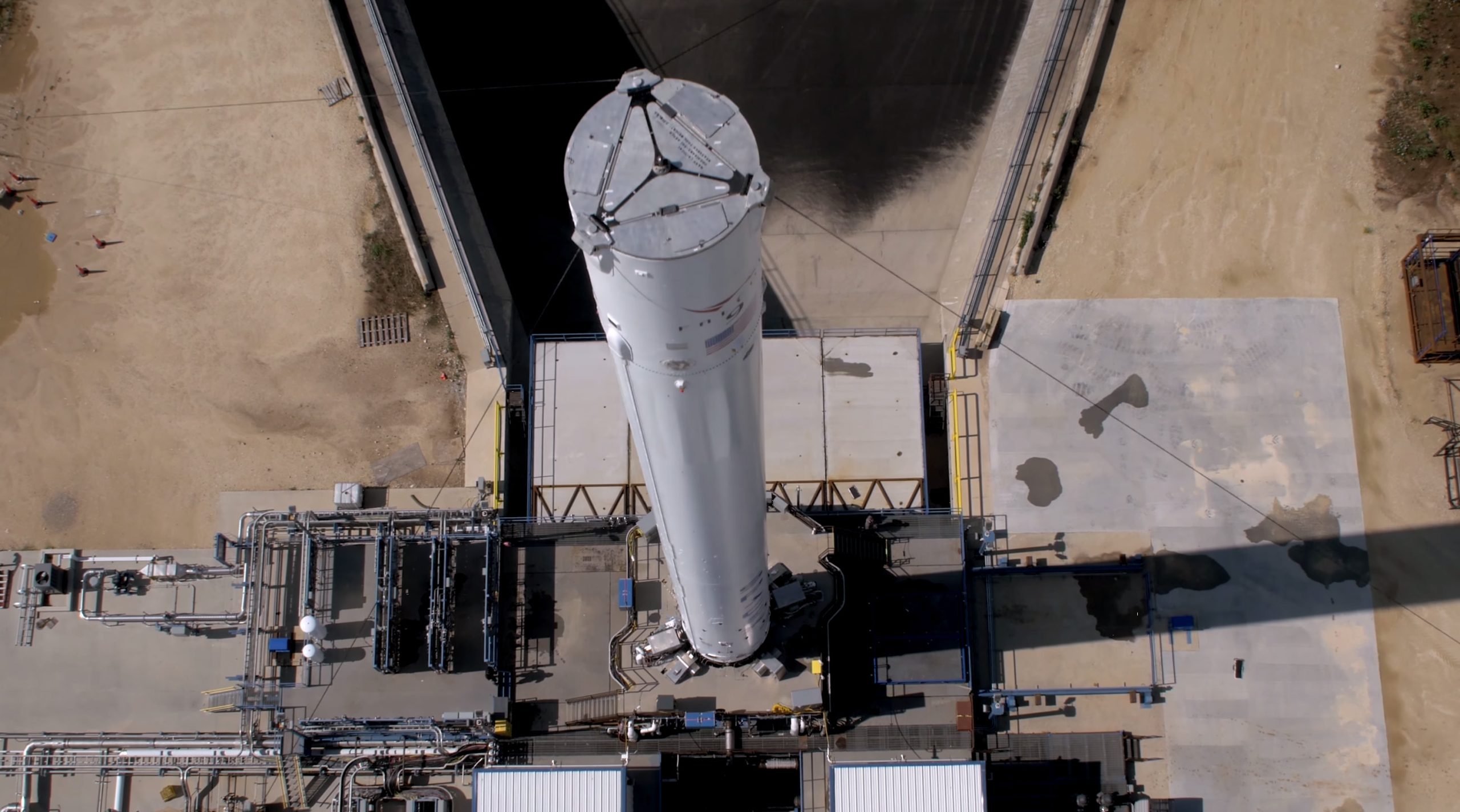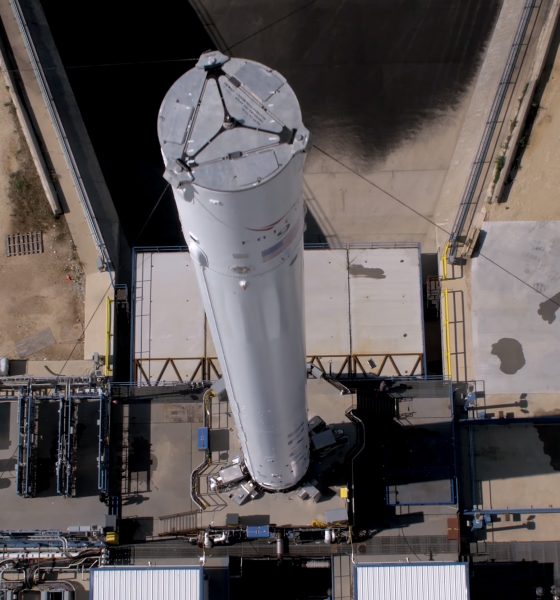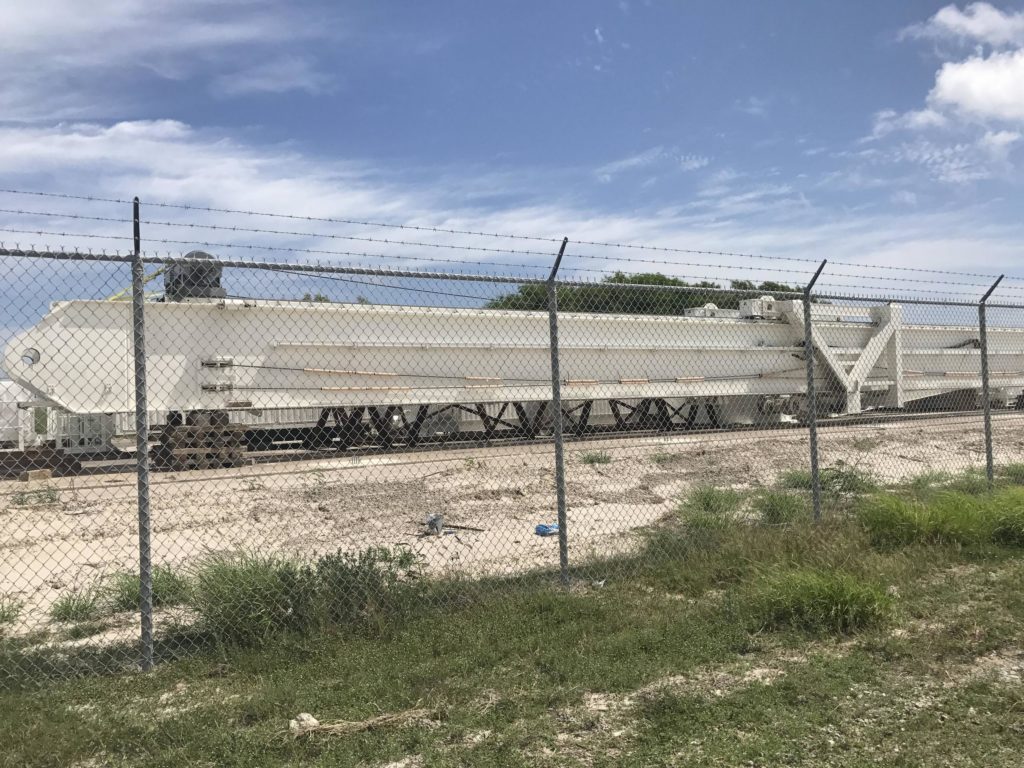

News
SpaceX contemplates Mars rocket factory on the South Texas coast
In statements provided to the Brownsville Herald, a Texan paper dedicated to a South Texas region that includes SpaceX’s Boca Chica launch site, state representative René Oliveira hinted that SpaceX’s plans for the region could go “well beyond conducting launches.”
SpaceX and South Texas
The Herald’s Steve Clark provided a great summary of the history between SpaceX and Texas in recent years, particularly related to the company’s efforts to construct a launch facility in the region. Aside from a considerable effort to create a sturdier foundation for the pad along the sandy, shifting shoreline of Boca Chica, Texas, the company’s work in the region has been rather quiet since the prospective pad’s announcement in 2014. Through a combination of tax incentives and a direct cash infusion, the state of Texas and the Rio Grande Valley region have both in some way strived to strengthen their relationships with SpaceX and solidify the iconic group’s presence in the region.
For Brownsville and Boca Chica, in particular, the latter of which has a population well under 100 individuals, SpaceX’s permanent presence would be a massive boom for the local economy by bringing an infusion of dozens or potentially hundreds of skilled, full-time positions to the quiet region.
In recent months, SpaceX has been very gradually progressing development of facilities around their potential launch site, albeit not the pad itself. These changes include a nearly complete public-private radio communications facility intended to both give college students hands-on experience and communicate with SpaceX’s Crew Dragon capsule as early as late 2018. Intriguingly, a Tesla energy installation has also been recently spotted at the facility.
Finally, a vast crane has been semi-permanently stationed on SpaceX property and had a corrugated shed build around it to protect it from the elements and SpaceX stalking fans in the region.
- Tesla Powerpack battery storage unit being installed at SpaceX’s facility in Boca Chica, Texas [Credit: Nomadd via NASASpaceFlight.com Forum]
- The boom of a giant crane (possibly meant for BFS) seen in late 2017, parked at SpaceX’s Boca Chica facilities. (Reddit /u/ ticklestuff)
More than just a launch pad?
State Rep. Oliveira’s statements can be seen in full below.
“About a year ago, SpaceX came to me with their concept of a new, larger, expanded plan for Boca Chica Beach,” Oliveira said. “The concept went well beyond conducting launches, and would require new commitments for construction, investment and jobs to support the new operations.”
“We looked at the original plan for the launch site, and the chain of work that would be done inside and outside on the rockets that would take off from Boca Chica. The concept SpaceX is examining would bring a lot of that work to Boca Chica, going well beyond the original plan.”
He [State Rep. René Oliveira, D-Brownsville] declined to reveal the details of the new concept for Boca Chica, saying it’s up to SpaceX to detail its plans and associated costs when it makes a request to CCSDC to apply for funding.
The timing of SpaceX concept, reportedly presented to Oliveira in late 2016 or early 2017, strongly indicate that the rocket company is considering a considerable expansion of their aspirations for the South Texas facilities under construction. Partly based on Oliveira’s suggestion that SpaceX and Brownsville “looked at…the chain of work” necessary for rockets to launch Boca Chica, the most obvious conclusion available is that SpaceX is thinking about developing Boca Chica into a veritable rocket city.

A Falcon 9 conducts tests at SpaceX’s McGregor testing facility in central Texas. (SpaceX)
A major problem facing SpaceX’s Mars rocket (BFR) program is dealing with the vehicle’s sheer size, 9m (30 feet) in diameter and at least as tall as Falcon 9. This size would make transporting the vehicle cross-country by road all but impossible, potentially forcing the company to abandon a bulwark of their current Falcon manufacturing strategy. The most obvious solution, as discussed briefly by CEO Elon Musk and President Gwynne Shotwell, would be to build a rocket factory where the launch pad is located. Boca Chica is thus almost certainly a prime location under SpaceX’s consideration for both the launch complex and factory needed to build and operate BFR. And this argument has been strengthened in recent months by statements from both executives hinting that prototype BFR spaceship (BFS) tests could begin in South Texas as soon as early 2019.
To say that the creation of such a manufacturing and launch infrastructure would transform the region would be an understatement. The sheer shock value of a small city being able to lay claim to the only private orbital launch complex in the US would be valuable in its own right, not to mention the distinct possibility that such a facility might one day launch the first humans to Mars. If the educated speculation above is, in fact, the truth of the matter, SpaceX can be expected to begin earnestly petitioning the local and state governments for additional public funds to partially support the major undertaking. Most importantly, the company would almost certainly need to procure an updated or wholly new environmental impact assessment from the FAA before being allowed to begin construction beyond the scope of the original 2014 grant.
Teslarati – Instagram – Twitter
Tom Cross – Twitter
Pauline Acalin – Twitter
Eric Ralph – Twitter

News
Tesla is not sparing any expense in ensuring the Cybercab is safe
Images shared by the longtime watcher showed 16 Cybercab prototypes parked near Giga Texas’ dedicated crash test facility.

The Tesla Cybercab could very well be the safest taxi on the road when it is released and deployed for public use. This was, at least, hinted at by the intensive safety tests that Tesla seems to be putting the autonomous two-seater through at its Giga Texas crash test facility.
Intensive crash tests
As per recent images from longtime Giga Texas watcher and drone operator Joe Tegtmeyer, Tesla seems to be very busy crash testing Cybercab units. Images shared by the longtime watcher showed 16 Cybercab prototypes parked near Giga Texas’ dedicated crash test facility just before the holidays.
Tegtmeyer’s aerial photos showed the prototypes clustered outside the factory’s testing building. Some uncovered Cybercabs showed notable damage and one even had its airbags engaged. With Cybercab production expected to start in about 130 days, it appears that Tesla is very busy ensuring that its autonomous two-seater ends up becoming the safest taxi on public roads.
Prioritizing safety
With no human driver controls, the Cybercab demands exceptional active and passive safety systems to protect occupants in any scenario. Considering Tesla’s reputation, it is then understandable that the company seems to be sparing no expense in ensuring that the Cybercab is as safe as possible.
Tesla’s focus on safety was recently highlighted when the Cybertruck achieved a Top Safety Pick+ rating from the Insurance Institute for Highway Safety (IIHS). This was a notable victory for the Cybertruck as critics have long claimed that the vehicle will be one of, if not the, most unsafe truck on the road due to its appearance. The vehicle’s Top Safety Pick+ rating, if any, simply proved that Tesla never neglects to make its cars as safe as possible, and that definitely includes the Cybercab.
Elon Musk
Tesla’s Elon Musk gives timeframe for FSD’s release in UAE
Provided that Musk’s timeframe proves accurate, FSD would be able to start saturating the Middle East, starting with the UAE, next year.

Tesla CEO Elon Musk stated on Monday that Full Self-Driving (Supervised) could launch in the United Arab Emirates (UAE) as soon as January 2026.
Provided that Musk’s timeframe proves accurate, FSD would be able to start saturating the Middle East, starting with the UAE, next year.
Musk’s estimate
In a post on X, UAE-based political analyst Ahmed Sharif Al Amiri asked Musk when FSD would arrive in the country, quoting an earlier post where the CEO encouraged users to try out FSD for themselves. Musk responded directly to the analyst’s inquiry.
“Hopefully, next month,” Musk wrote. The exchange attracted a lot of attention, with numerous X users sharing their excitement at the idea of FSD being brought to a new country. FSD (Supervised), after all, would likely allow hands-off highway driving, urban navigation, and parking under driver oversight in traffic-heavy cities such as Dubai and Abu Dhabi.
Musk’s comments about FSD’s arrival in the UAE were posted following his visit to the Middle Eastern country. Over the weekend, images were shared online of Musk meeting with UAE Defense Minister, Deputy Prime Minister, and Dubai Crown Prince HH Sheikh Hamdan bin Mohammed. Musk also posted a supportive message about the country, posting “UAE rocks!” on X.
FSD recognition
FSD has been getting quite a lot of support from foreign media outlets. FSD (Supervised) earned high marks from Germany’s largest car magazine, Auto Bild, during a test in Berlin’s challenging urban environment. The demonstration highlighted the system’s ability to handle dense traffic, construction sites, pedestrian crossings, and narrow streets with smooth, confident decision-making.
Journalist Robin Hornig was particularly struck by FSD’s superior perception and tireless attention, stating: “Tesla FSD Supervised sees more than I do. It doesn’t get distracted and never gets tired. I like to think I’m a good driver, but I can’t match this system’s all-around vision. It’s at its best when both work together: my experience and the Tesla’s constant attention.” Only one intervention was needed when the system misread a route, showcasing its maturity while relying on vision-only sensors and over-the-air learning.
News
Tesla quietly flexes FSD’s reliability amid Waymo blackout in San Francisco
“Tesla Robotaxis were unaffected by the SF power outage,” Musk wrote in his post.

Tesla highlighted its Full Self-Driving (Supervised) system’s robustness this week by sharing dashcam footage of a vehicle in FSD navigating pitch-black San Francisco streets during the city’s widespread power outage.
While Waymo’s robotaxis stalled and caused traffic jams, Tesla’s vision-only approach kept operating seamlessly without remote intervention. Elon Musk amplified the clip, highlighting the contrast between the two systems.
Tesla FSD handles total darkness
The @Tesla_AI account posted a video from a Model Y operating on FSD during San Francisco’s blackout. As could be seen in the video, streetlights, traffic signals, and surrounding illumination were completely out, but the vehicle drove confidently and cautiously, just like a proficient human driver.
Musk reposted the clip, adding context to reports of Waymo vehicles struggling in the same conditions. “Tesla Robotaxis were unaffected by the SF power outage,” Musk wrote in his post.
Musk and the Tesla AI team’s posts highlight the idea that FSD operates a lot like any experienced human driver. Since the system does not rely on a variety of sensors and a complicated symphony of factors, vehicles could technically navigate challenging circumstances as they emerge. This definitely seemed to be the case in San Francisco.
Waymo’s blackout struggles
Waymo faced scrutiny after multiple self-driving Jaguar I-PACE taxis stopped functioning during the blackout, blocking lanes, causing traffic jams, and requiring manual retrieval. Videos shared during the power outage showed fleets of Waymo vehicles just stopping in the middle of the road, seemingly confused about what to do when the lights go out.
In a comment, Waymo stated that its vehicles treat nonfunctional signals as four-way stops, but “the sheer scale of the outage led to instances where vehicles remained stationary longer than usual to confirm the state of the affected intersections. This contributed to traffic friction during the height of the congestion.”
A company spokesperson also shared some thoughts about the incidents. “Yesterday’s power outage was a widespread event that caused gridlock across San Francisco, with non-functioning traffic signals and transit disruptions. While the failure of the utility infrastructure was significant, we are committed to ensuring our technology adjusts to traffic flow during such events,” the Waymo spokesperson stated, adding that it is “focused on rapidly integrating the lessons learned from this event, and are committed to earning and maintaining the trust of the communities we serve every day.”










